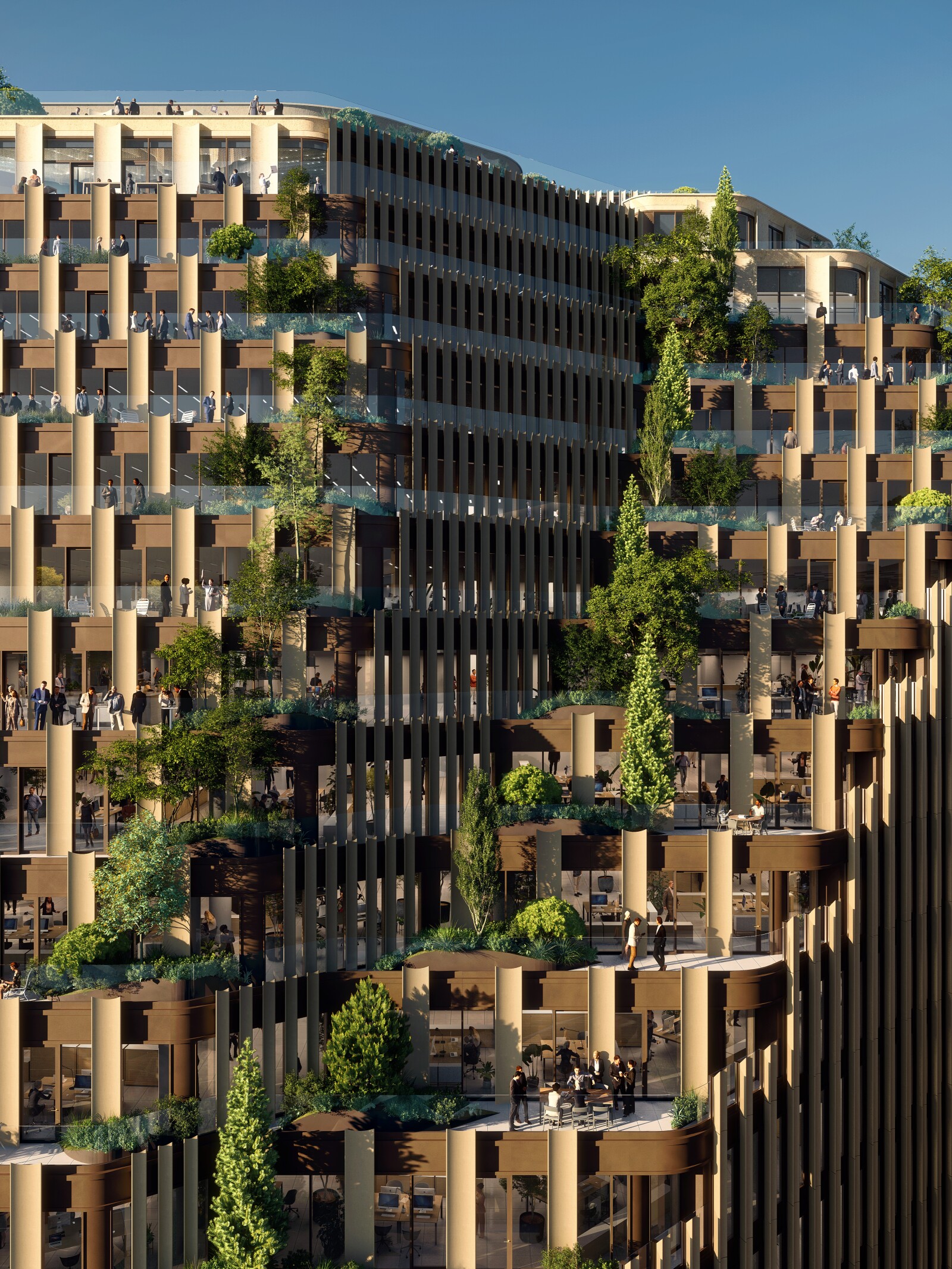


In the evolving landscape of workspace design, the office is no longer just a place to plug in a laptop, it’s a stage for innovation, collaboration, and connection. As businesses compete for top talent in a hybrid-first world, they’re beginning to realise that the key to unlocking creativity and loyalty might just lie… outdoors. Curated terraces and engaging roof gardens are emerging as powerful assets in the design of office buildings, offering not only a breath of fresh air but a breath of fresh thinking. These spaces are where ideas spark, employees recharge, and companies set themselves apart in a competitive market. In short, external spaces are more than just aesthetic design features, they’re strategic tools.
It's been well documented that a connection to green space has a positive impact on wellbeing… I’ve sat in enough CPD lunches to know this. However, what’s more difficult to quantify or capture is how nature boosts creative thinking and problem solving - key skills that are applicable to any profession. Research by Human Spaces indicated that employees working in environments enriched with natural elements reported a 15% higher level of creativity and well-being. Couple that with research published in the Journal of Experimental Psychology that found taking an eight-minute walk outdoors enhanced participants' ability to brainstorm by a staggering 60%. This suggests that even brief exposure to natural environments can significantly boost creative thinking. Now, I’m not advocating that all architecture studios migrate to the jungle, but workspaces that have convenient access to green spaces are likely to have better performing and more engaged employees that, in turn, produce better performing businesses.
Our client Landsec understood this when we were developing the brief for Hill House. They understood that prospective tenants would recognise the value of high-quality outdoor space as this not only creates an attractive place to work, but it fosters a more creative, innovative workforce. A win-win. Our Hill House scheme creates 18 floors of best-in-class office floorspace, each with access to generous, landscaped, south-west facing terraces. The progressively terracing building with its vertical urban forest is more than just aesthetic, it’s transformative. These spaces have been curated to create zones for different types of activities, a quick phone call, an hour’s deep focus on a laptop or team brainstorming sessions. All benefiting from the enhanced creative energy gained from being outdoors.
In addition to this, today’s workforce, and particularly the younger generations, are prioritising employment that gives them clear opportunities to grow and environments that can facilitate that. With businesses encouraging staff back into the office, these spaces need to be worthy of the commute. On the softer side, employees are also seeking employers that care about and prioritise their mental health and wellbeing, and what better way to support that than convenient access to outdoors space only a few paces away from your desk. This gives employers the competitive edge in recruitment and could well be the perk that tips the balance in securing and retaining the top talent.
The business case for this effectively writes and pays for itself. Access to green spaces allows creativity to flourish as well as helping retain, attract and grow talent. There are also a host of other benefits such as reduced absenteeism, reduction in stress levels, better engagement, stronger culture and a happier workforce. There is also the ESG side to these outdoor spaces, which in itself could be another article. Landscaped terraces strengthen climate resilience by reducing the urban heat island effect and supporting rainwater attenuation. They also improve biodiversity and contribute to urban greening in what can be incredibly dense locations within city centres. And, where large trees are proposed, they can even reduce the cooling loads within buildings through shading (not that you can account for that in your thermal modelling calculations). Design and construction aside, a drawback is the maintenance required to keep these spaces in prime condition. The uncollected leaf litter could be a slip risk, or the gathering of dry pine needles could be a fire risk. The increase in maintenance likely attracts an increase in service charge for tenants. However, this is surely outweighed (and not only for creative industries) given the long list of benefits.
Well-designed outdoor spaces, as part of the workspace offer, are no longer just ‘nice-to-haves’, they are key to building more human-centric, resilient workplaces. By offering employees access to nature-rich spaces, businesses create the conditions where creative thinking can thrive. Minds are clearer, stress is lower, and inspiration is easier to find. As the office sector continues to evolve in the post-pandemic era, companies that prioritise outdoor amenities aren't just future-proofing their buildings, they're future-proofing their people. In short, giving creativity room to breathe might start with giving it a place to step outside.
Share